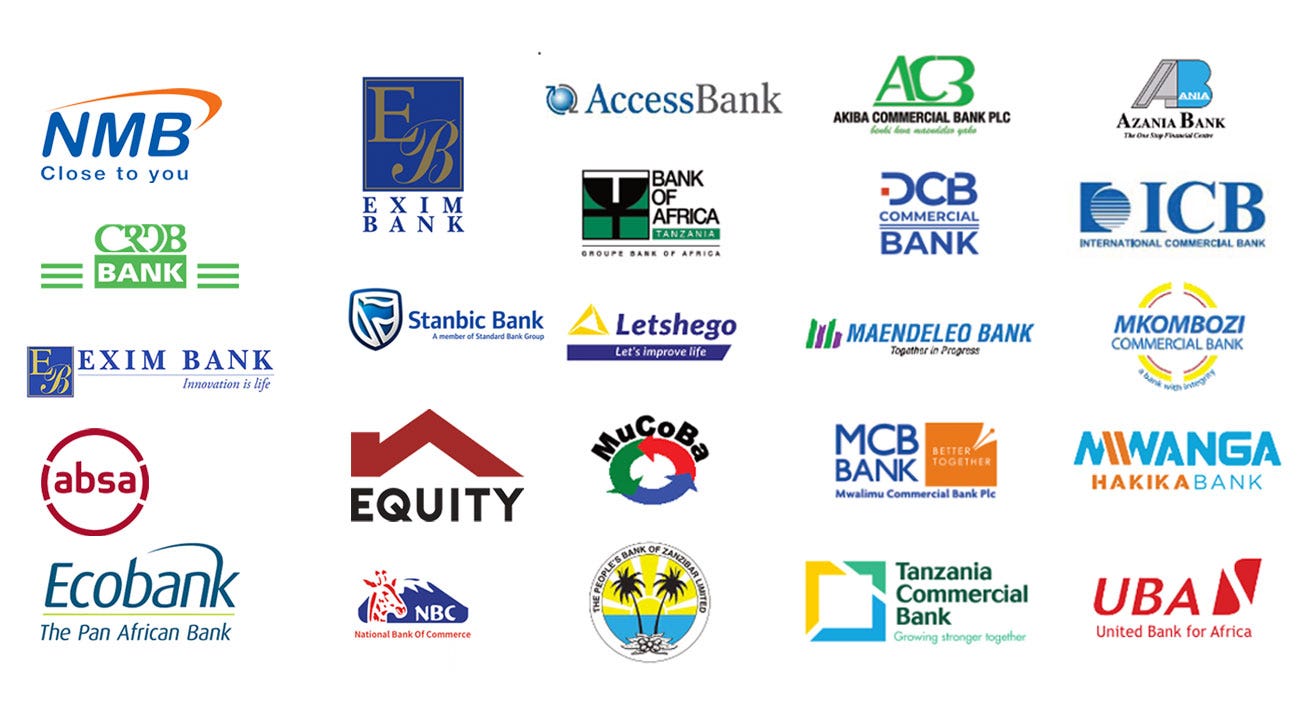Mobile Money Charges: The Main Barrier to Digitising B2B Transactions in Africa. How do we bypass Mobile Money altogether?
Across Africa, Fintechs are digitising B2B payments using mobile money but they struggle because mobile money got fees and they charge a lot and a lot more often.
Introduction:
In Africa, mobile money has changed the way people handle personal finances, making it easy to pay for goods, services, and even bills. However, when it comes to business-to-business (B2B) transactions, the story is different. One major problem is the high cost of using mobile money, which makes it hard for fintech companies to offer effective digital payment solutions for businesses. These fees can be so high that they discourage businesses from going digital and can eat into their profits.
In Africa, Although usually mixed up and confusing for many, The main difference between fintech and mobile money is this, Fintech are trying to solve a problem, Mpesa solved a problem 15 years ago and now they are trying to grow revenues.
Companies like Sava, Duplo, Waza, Bujeti, Verto, and Moniepoint have emerged because mobile money solutions are not fully equipped to handle the complexities of B2B payments. Mobile money was designed primarily for individuals and small transactions, leaving significant gaps in areas like expense management, cross-border payments, and large-scale transaction automation for businesses. These companies are stepping in to solve critical pain points such as the lack of visibility in B2B financial flows, inefficiencies in cash-based payments, and challenges with foreign exchange for cross-border trade. By offering more robust digital tools, automation, and data-driven solutions, they are filling the void mobile money cannot address in the business payments space, driving Africa’s B2B payments evolution forward.
The Challenge of Mobile Money Fees
If a business collects $100m a year with average ticket size of $70, they will pay 1.6m to M-pesa and $1.5m to the fintech that digitised them, so in total it will be $3m.
We all agree that Mobile money is great for personal transactions, bills and betting, but it becomes less appealing for B2B payments. Here’s why loads of charges is bad:
High Costs for Transactions: Mobile money charges fees based on the amount of money being transferred. For small personal payments, these fees might be manageable. But for businesses that handle large amounts of money, these fees quickly add up. This is especially true for industries with narrow profit margins, like petroleum, distribution, wholesale, and fast-moving consumer goods (FMCG).
Impact on Business Margins: Many businesses work with very tight profit margins. This means that any additional costs can have a big impact on their bottom line. High mobile money fees can cut into these margins, making it difficult for businesses to justify the switch from traditional payment methods. For example Transporters are very manual and cash based so any fees is a discussion of their profit margins.
Example 1: Tembo’s Issue with Major Transporters in Tanzania
Tembo, a fintech company trying to make B2B payments easier, faced a major problem in Tanzania. They developed a Point of Sale (POS) system to help transporters handle payments digitally. But as you may guess it, the major mobile money partners, charged 2-3% total fees on both incoming and outgoing payments for these transporters. For transporters dealing with high-value transactions every day, these fees added up quickly. As a result, Tembo and the customer found it too expensive to maintain their digital solution and had to go back to the drawing board, at some point the regulators directed the solution to be removed as the customers escalated the high fees with that transporter.
Example 2: PepsiCo’s Struggle with High Fees
PepsiCo, a global brand with a huge B2B network, also ran into trouble. They partnered with a fintech company and a mobile money to digitize their payments. However, the less flexible percentage fees from the mobile money operator on both sending and receiving payments made the digital option too costly. Since PepsiCo operates in the FMCG sector, where margins are tight and transaction volumes are high, these fees were too much to handle. They ended up sticking with traditional payment methods because mobile money was too expensive, and cash is free, says the mom & pop retailer.
So can we bypass or avoid these high charges and mobile money?
Yes, We can, To avoid and bypass mobile money when it comes to B2B payments may mean that we develop alternative means of payments, Think of bank transfers or card payments which runs on different payments rails not that of mobile money hence the cost is lower
Pay by bank (The case of Sarafu ft AzamPay)
Sarafu offers an innovative solution to the problem of high mobile money fees. Instead of relying on mobile money, Sarafu partners with AzamPay to allow retailers (businesses) to make payments for goods directly through banks to their suppliers (businesses) on the platform. This approach helps them bypass the high costs associated with mobile money. When a wholesaler sells they expect money to come reliably immediately, by integrating with banks directly Sarafu enables businesses to process payments through their bank accounts, avoiding mobile money fees. This method is more cost-effective, as banks generally charge lower fees compared to mobile money services. A Retailer using Sarafu can pay their suppliers directly from their bank via AzamPay, avoiding the 3% mobile money fee and making digital payments more affordable.
Pay by Points (Corporate Reward Programs)
Retailers can take advantage of Pay by Points programs to pay for goods and services by redeeming accumulated reward points, effectively bypassing mobile money platforms. Through partnerships with suppliers and service providers, retailers can earn and spend points based on their purchasing activity, reducing the need for traditional cash payments. This method encourages loyalty within a business network and offers retailers an alternative way to manage payments, particularly for repeat orders or frequent transactions. By integrating a points system into their procurement process, retailers can create a cost-effective payment solution that enhances their financial flexibility while avoiding mobile money fees and limitations
Think of mobile money on mastercard rails, that way we avoid all the charges on mobile money but we replace them with mastercard advantages of lower fees.
Pay by Card (Corporate Cards)
For retailers, Pay by Card offers a seamless way to make payments to suppliers or service providers without relying on mobile money. By using corporate debit or credit cards, retailers can process payments directly through global card networks like Visa or MasterCard, ensuring that funds are settled into the supplier's bank account quickly and securely. This approach is particularly useful for larger transactions that exceed mobile money limits and offers enhanced security and transaction tracking. Retailers can also benefit from streamlined expense management, loyalty rewards, and cash flow flexibility, making it easier to manage operational costs and supplier payments efficiently.
Pay by Credit (Letters of Credit)
Pay by Credit, through the use of domestic Letters of Credit (LCs), can be particularly beneficial for retailers who engage in larger or international transactions with suppliers. An LC provides a bank-backed guarantee that payment will be made once the retailer receives the goods and the agreed-upon terms are met. This method not only secures the transaction but also allows retailers to avoid the need for immediate payment, improving cash flow management. By leveraging LCs, retailers can confidently make high-value purchases from suppliers, bypassing mobile money limitations and ensuring that their supply chain remains robust and secure, even when dealing with cross-border transactions.
Conclusion
High mobile money charges are a substantial hurdle for fintech companies aiming to digitise B2B transactions in Africa. The experiences of Tembo and PepsiCo reveal how these fees can render digital solutions prohibitively expensive, particularly for businesses operating with tight margins and large volumes of cash transactions.
Sarafu offers a compelling model by using realtime bank payments to circumvent mobile money fees. This method not only reduces costs but also provides a scalable alternative that can accommodate the financial needs of businesses more effectively. By avoiding the high costs associated with mobile money, Sarafu demonstrates that overcoming these financial barriers is essential for making digital payments more accessible and sustainable across Africa.
Additionally, while card payments present an alternative to mobile money, their lower adoption rates compared to mobile money introduce both opportunities and challenges. Card payments could potentially offer a cost-effective solution, but the lower penetration of card usage presents a significant obstacle. This scenario highlights the ongoing need for innovative fintech solutions to balance cost, accessibility, and adoption rates to better serve businesses in Africa.
QQ: Did you learn anything on this article? what do you think is wrong about our line of thinking? tell us more and how you felt about this material, we would love to learn.












Over the weekend I realized bank payments are actually cheaper. I've been trying to live mobile money free ever since. And l'm pushing to get an article out from a consumer perspective. "Lipa Kwa Simu" is screwed.